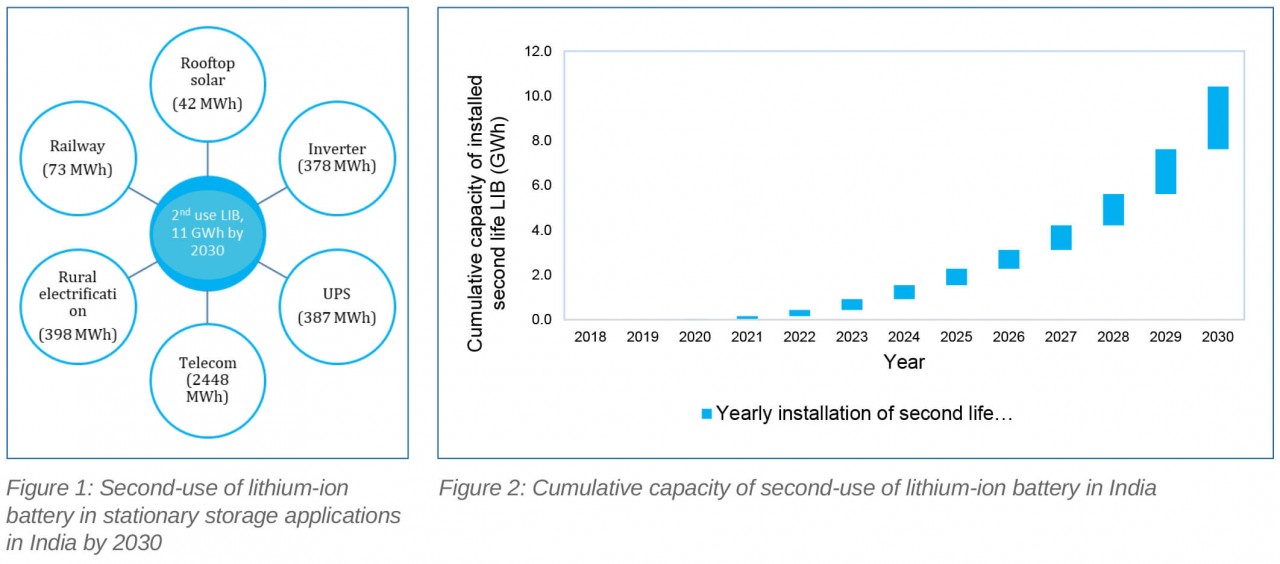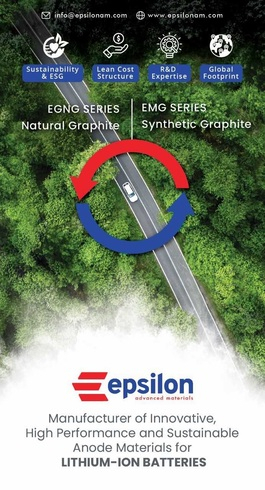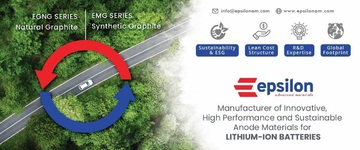Second-life lithium-ion battery scenario
The excessive use of lithium-ion batteries to cut vehicular emission will certainly create pollution of a different sort. To pre-empt the problem, second-use battery options need to be promoted, both from an environmental and financial aspect.
With an increasing use of battery for different applications, the concerns associated with the disposal or reuse of used batteries is gaining importance. In the absence of efficient recycling technology, many of the modern battery technologies such as lithium-ion battery (LIB) end up in landfills. In such a scenario, dealing with the huge amount of retired batteries for a second useful life is gaining considerable interest among researchers as well as industries. These batteries are generally known as second-life battery (SLB) and the primary source of these batteries is the electric vehicle. This is because of a huge penetration of EVs in the market, which will become a major source of a large number of retired batteries once their use in the vehicles is over.
Second-life battery projects globally
Currently the deployment of SLBs is limited to commercial use. Although some notable projects are undertaken globally to validate real-life applications, most of them are research rather commercial projects such as:
- The University of California, Davis employed a second-life energy storage system for their RMI Winery Microgrid Project and these batteries were sourced from Nissan Leaf EVs.
- In Hamburg, Germany, BMW, Vattenfall and Bosch together constructed a 2 MW, 2800 kWh second-life battery energy storage system (SLBESS) for grid support
- In 2013, ABB and General Motors used second-life EV batteries to build a 25 kW, 25 kWh energy storage system in San Francisco, US and the used batteries were from the Chevrolet Volt, an electric hybrid.
- Toyota built a stand-alone 85 kWh SLBESS to support 40 kW photovoltaic system using 208 nickel metal hybrid (NiMH) batteries at the Lamar Buffalo Ranch at the Yellowstone National Park, USA.
In 2015, Nissan switched to commercial production of SLBESS. There are other notable SLB projects around the world and these are listed in Table 1.
Table 1: Important second-life battery projects
| Sr. No. | Joint Ventures | Description | Location |
| 1. | Daimler/ GETEC/The Mobility House/ Remondis/EnBW | Battery storage unit with a total capacity of 13 MWh using degraded EV batteries from Daimler EV models | Luenen, Germany |
| 2. | BMW/PG&E | 18-month pilot project to demonstrate EV smart charging and optimization of grid efficiency with participation of 100 BMW i3 owners | San Francisco, USA |
| 3. | 4R energy (JV between Nissan and Sumitomo) / Green Charge Network | System (600 kWh/400 kWh): 16 Nissan Leaf LIBs regulate energy from a solar plant | Osaka, Japan |
| 4. | BMW/Vattenfall/Bosch | 2,600 battery modules from 100 electric cars, and provides 2 MW of output and 2.8 MWh of capacity | Hamburg, Germany |
| 5. | Renault/Connected Energy Ltd. | E-STOR system: on-grid, providing energy storage that prevents power grid overload and balances supply and demand | UK |
| 6. | Mitsubishi/PSA/EDF/ Forsee Power/MMC | Bi-directional battery energy consumption optimization from retired batteries | Paris, France |
| 7. | General Motors/ABB | Five Chevrolet Volt LIBs, 74 kW solar array and two 2 kW wind turbines to power a General Motors office building site | USA |
Demand of second-use lithium-ion battery in India
We at IESA have estimated the cumulative capacity for second-life lithium-ion battery for India at 11 GWh by 2030. The study considered the life of second-life of lithium-ion battery for different applications as follows: rooftop solar: 4 years; inverter: 4 years; UPS: 5 years; telecom: 4 years; rural electrification: 3 years; railway: 3 years. Figure 1 shows cumulative capacity of second use of lithium-ion battery for different sectors. Among different sectors, the telecom sector would be the biggest contributor for second-life lithium-ion battery at around 2.5 GWh. Figure 2 shows the yearly installation of second-use of lithium-ion battery. We can expect around 3 GWh of additional second-use lithium-ion battery in India by the year of 2030.
Recommendations
To use lithium-ion battery in large scale applications, the total investment cost increases due to the high price of the battery. Thus, retired EV batteries can be a practical and inexpensive solution for many stationary applications. However, economic uncertainty and liability concerns are associated with second life batteries which limit market penetration. The following steps are required to increase the market share of second-life batteries:
- specific policies and strategies to ensure development of a market for these batteries
- federal and state tax credits, rebates, and other financial support to encourage the use of second-life batteries
- proper reuse and collection mechanism of used EV batteries need to be specified
- development of standards for testing, evaluation and selection of cells suitable for second life from a battery pack
- repurposed battery companies can tie-up with EV battery manufacturers to get information of battery function history; this can help in estimation of degradation of retired EV battery.
| Life cycle stage | Initiative | Recommendations |
| Battery/vehicle production | Material selection | Chemistry standardization at the beginning of battery production would help in mixing and matching of retired EV batteries |
| Design for EOL | A standard design guideline of battery pack making process will ease disassembly and refurbishment | |
| Use phase | Repair or maintenance | A guideline about the battery repair/maintenance can be introduced to extend LIB life after use in EV. |
| Collection | Extended producer responsibility | Proper regulations to specify transfer of collection responsibility in case of reuse |
| Transport | Shipping guidelines | Specific guidelines for large size end-of-life EV batteries are required for the second-life battery industry |
| Reuse application | Reuse provision | A standard battery testing guideline for second-use battery is very crucial in absence of its functions and history, specifically for safety reasons Need to prioritize second applications based on techno-economic analysis Economic incentives for reuse of LIB |














